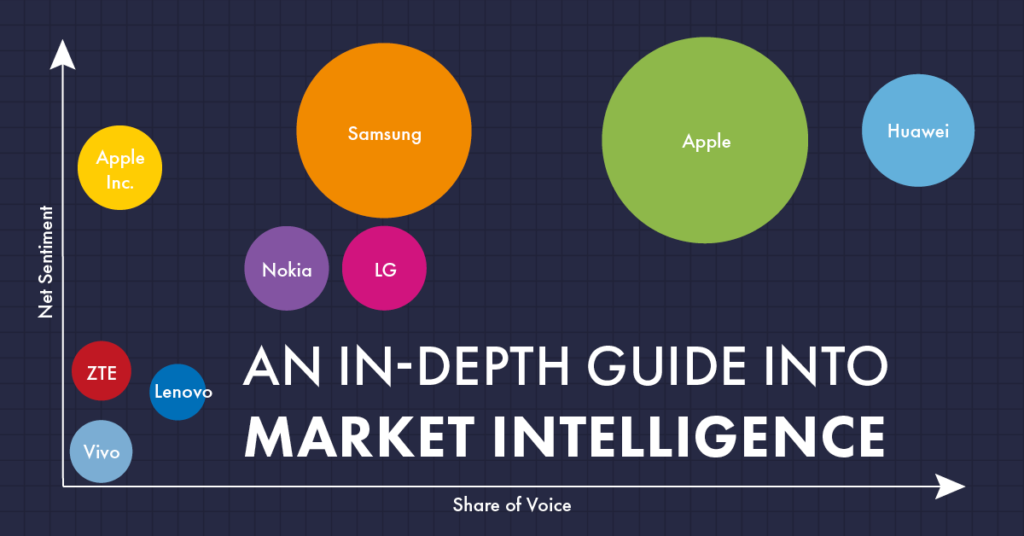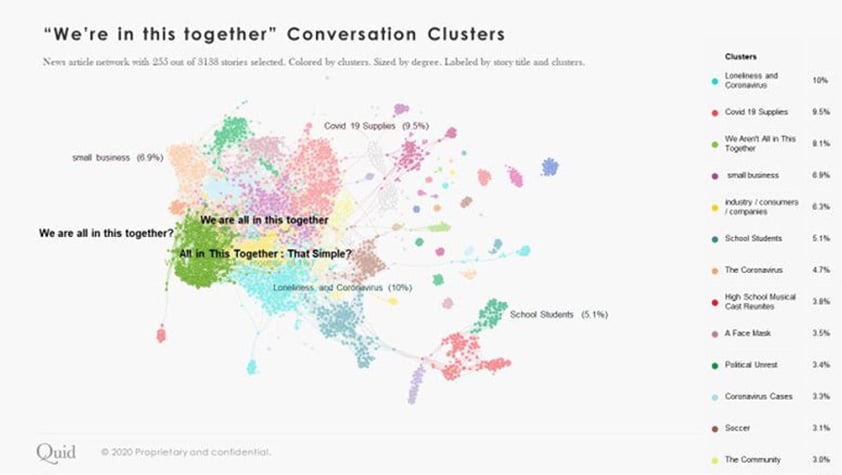Admin

Blog Summary
Exploring market intelligence as an indispensable tool for all business sizes, this blog debunks the myth that it's only for industry giants, illustrating its critical role in navigating the fast-evolving market landscape.
Key Points Overview
Top Takeaways
Conclusion
Embracing market intelligence transforms data into actionable insights, empowering businesses to not just survive but thrive by staying one step ahead of market trends and consumer needs.
What is market intelligence? It’s a term that you’ve likely heard many times in the last few years and perhaps have dismissed as something that only applies to industry leaders with full-fledged marketing and tech teams. This is a myth – and something your competitors don’t want you to know. Let’s see why that is!
The truth is that market intelligence – the basic awareness of the state of the market – is no longer optional for businesses of any size today. People’s buying and consuming habits have been in a constant shift in the last few years, and the changes are happening faster than ever before because of COVID-19. And surging ecommerce as the preferred mode of consumers makes it easier than ever for new ideas to penetrate the market and break through traditional supply chains. That means that the competition is fiercer than ever – and that not everybody will survive these shifts.
What’s a company to do? The only way to survive in this highly competitive climate is to keep a constant finger on the pulse of the market and stay a few steps ahead of your competitors, and ahead of the developing trends. And this is market intelligence: having an unbiased 360-degree view of all data sources from all the systems and networks available to you and being able to separate the signal from the noise.
If all this sounds either too vague or too overwhelming, let’s go in-depth about what market intelligence really means and what it can be used for.
Simply put, market intelligence is the practice of gathering and analyzing all the data and information about the market that is relevant to your company to gain continuous insight into market trends, competitors, as well as customers’ values and preferences.
Market intelligence is the brand awareness created through capturing and monitoring information about products, trends, consumers, and competitors. It involves monitoring a wide variety of relevant sources across the web as well as integrating proprietary consumer resources to aggregate and analyze all data sets as a whole.
Learning how to conduct market research is indispensable as it can provide insight into trends, competitors, and the voice of the customer, as well as help prevent crises and efficiently guide the company’s decision-making process as it relates to product development and innovation, marketing campaigns, managing customer experience, and improving customer service.
And these benefits are apparent to businesses immediately.
According to Gartner, the main immediate benefits of conducting market research and industry analysis on the regular basis include “real-time descriptive, diagnostic and predictive analytics [that supply] prescriptive information about the best available action to be taken in response to the situation.” And organizations that use market intelligence continuously in a strategic way will see “improved situational awareness and a common operating picture across business functions by providing real-time dashboards, alerts and best-next-action recommendations, [as well asl] the capability to trigger automated responses by sending signals to machines or initiating business processes in cases where the decision on what to do can be automated.”
There are several amazing use cases available to businesses thanks to market intelligence. We’ll explore a few, including brand perception, competitive intelligence, product intelligence, consumer intelligence, and trend analytics.
Brand awareness keeps you informed on who is talking about your brand and what they are saying. Keeping a constant finger on the pulse of brand health over time reveals what your normal is and sends your spidey sense tingling when things are about to go south.
Competitive intelligence is the systematic collection and analysis of any information related to your competitors in an effort to understand what is happening in your industry and where you stand in relation to them. It informs your own marketing to better capture the attention of consumers and to take advantage of gaps in the market before they become apparent to everyone.
The company's dataset captures company and investment information and is a good first step to start monitoring competitors’ health.
Another important component of market intelligence is consumer intelligence, the practice of gathering all possible information from a variety of data sources as it relates to your consumers – past, future, and prospective. 32% of consumers report that they’d walk away from a brand they love after just one bad experience. Consistently monitoring how your consumers experience your brand and listening to the voice of the customer will help you prevent customer churn, improve customer service and build relationships with them.
The third important component of market intelligence is product intelligence. This is where you analyze your product or service and monitor the conversations around it to better understand how it measures against similar offerings in the market. Armed with this intel, your brand has the agility to push identify market gaps and pivot quickly when necessary.
And product intelligence includes information about the various market factors related to its product and supply. For instance, if your textile company is heavily dependent on bamboo sheets, you want to be aware of potential supply disruptions in the bamboo industry. Product intelligence tell you that.
Trend analysis should be the backdrop of all the other components. Understanding emerging trends and monitoring existing trends for growth or decreasing interest can make or break a business. A thorough consumer trend analysis means keeping tabs on both traditional media and performing regular social media analysis, allowing your brand to better align itself with the changing tides.
Leading brands and agencies use market intelligence before launching a campaign to understand relevant conversation and sentiment. After all, studies show that consumers are more likely to purchase from brands whose values align with theirs, so social sentiment analysis should be an essential part of any market intelligence strategy.
For instance, during the pandemic, many brands created ads that sought to represent the consumer voice on the exhausting impact of these events. They wanted to openly recognize the challenges of the new normal, and offer hope.
How did the brands manage to find the right tone for their message? With social listening, or the data collection and analysis of what your target market is talking about, and how phrases such as “we’re in this together” were performing on social media. With campaigns specifically centered around current events, it is crucial to understand the collective sentiment of consumers, and your target market in particular, to develop the right tone and messaging.

That’s just one example of many demonstrating the timely, actionable insight market intelligence provides; Quid provides a powerful platform for capturing these continuous, informative insights. Reach out for a demo and we’ll show you how it can look for your specific brand needs!